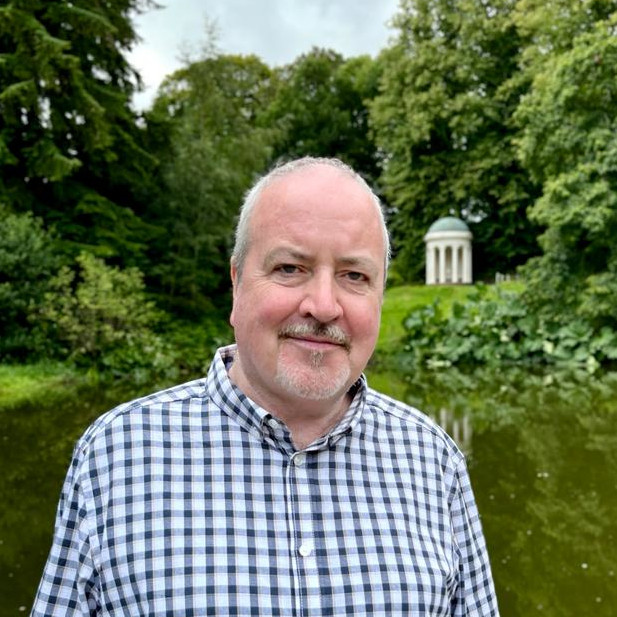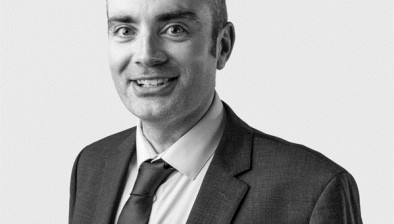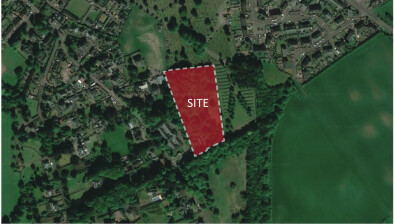Construction Leader: Raymond Slaine on the culture of commitment and change at Goodson Associates
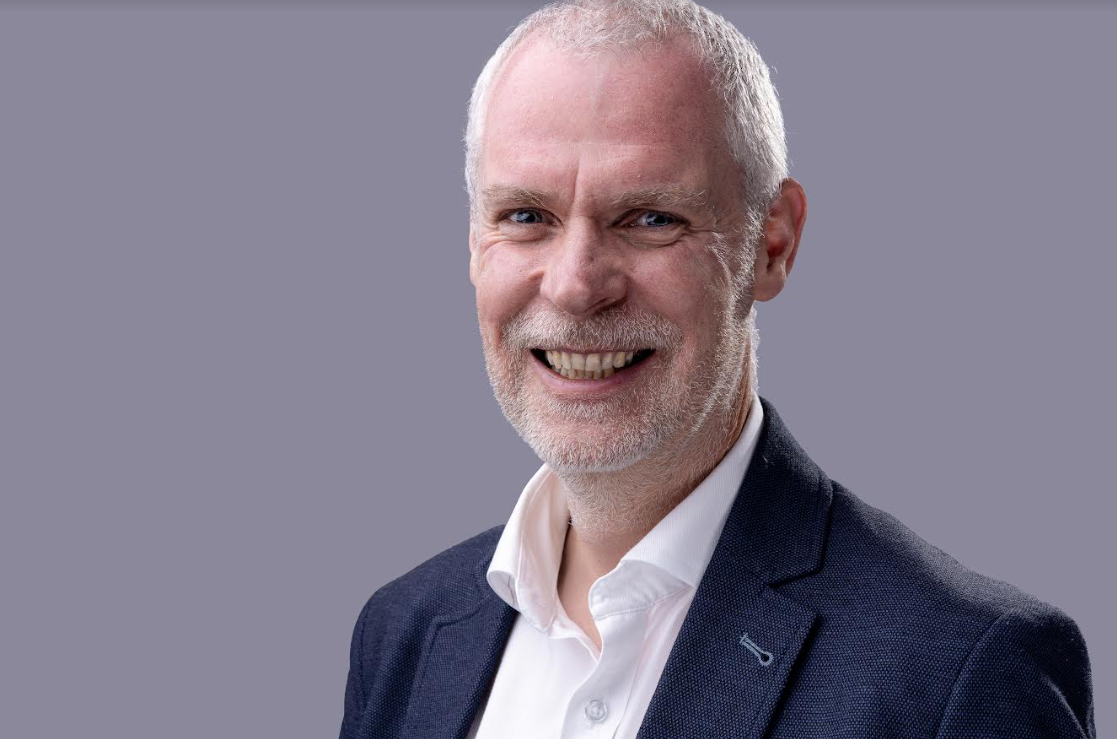
Raymond Slaine
This month’s Construction Leader feature sees Raymond Slaine tell Colin Cardwell how the ethos of Goodson Associates is helping the company meet the challenges of fluctuating trends, the climate emergency and Artificial Intelligence.
This year began on an encouragingly upbeat note for Goodson Associates. The company, which celebrated its 30th anniversary last year, iced the cake by picking up the award in the Best UK Consultancy (medium) category and enjoyed a gala dinner at the Association for Consultancy and Engineering (ACE) Awards in January.
Managing director Raymond Slaine said at the time that it was “testament to the dedication and commitment of our talented teams of engineers, technicians and support staff to be recognised… Having just celebrated 30 years in business this is a fantastic achievement for our company”.
Now with 25 years’ experience as a consulting structural and civil engineer and an SER Certifier since 2007, he became managing director of Goodson’s three years ago in its office in Melville Street, Edinburgh, after heading up the Glasgow office for 18 years.
The company, he says, attracts that type of long-term commitment. “It’s the culture of the company. The directors are all aware of what goes on with all our projects and we are only as good as the people we employ.
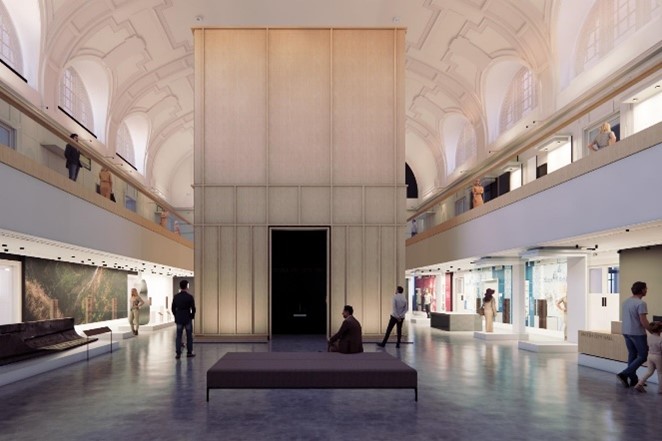
Perth City Hall where the Stone of Destiny is to be displayed
“It’s very about much ensuring that we give our staff the support and tools they need to be the best that they can be within the industry.”
As Goodson Associates is a limited company owned wholly by shareholding directors, it’s perhaps unsurprising that they’re actively involved in every aspect of the business, including day-to-day project management and a commercial eye for development from design to construction.
It also takes, adds Raymond, a cross-sectorial approach: projects include the Perth City Hall Museum, The Great Tapestry of Scotland, Fairfield Walk at Edinburgh Bioquarter and several commercial, educational and residential developments.
“The original ethos of the founding partners was very much quality of service, design and structural solutions that are recognised to be commercially the most advantageous within the market and this led to a stream of work within the retail industry with clients such as Tesco and Dobbies which has since expanded into these other sectors.”
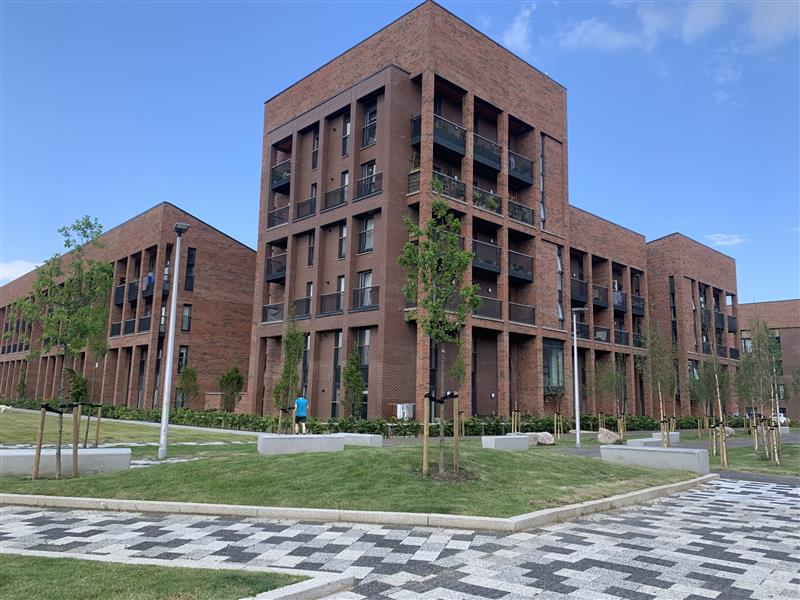
The residential development at Laurieston in Glasgow
The company now has a headcount of 70 people, including 64 technical staff across offices in Edinburgh, Glasgow’s Lansdowne Crescent and it recently moved into new premises at Carden Place in Aberdeen.
“Things constantly fluctuate in different areas of construction, he notes. “A case in point now is that developers are being impacted by interest rates and government policy in relation to rentals so we need to have the ability to respond quickly – if there’s a downturn for example in the Build to Rent (BTR) market we must be able to turn to other sectors.
“Sites that were previously earmarked for BTR for instance are increasingly being adapted for Purpose Built Student Accommodation (PBSA).
“That seems to be a general trend and though we are seeing resistance from some councils to this sort of development the breadth of experience we have within our technical staff allows us to provide a very high level of service across multiple sectors.”
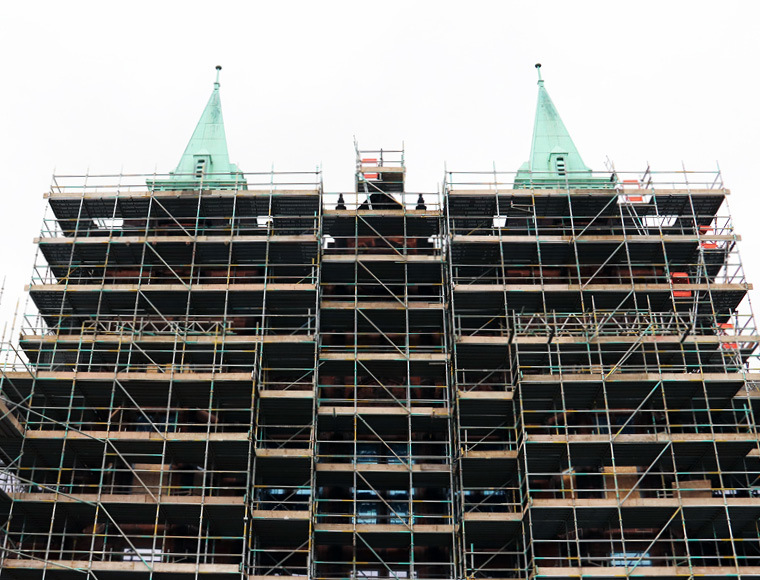
The regeneration of the listed David Stow building at Jordanhill
With a climate emergency declared by diverse jurisdictions – including councils – many of the challenges and opportunities Goodson now encounters involve the demand from both funders and tenants for enhanced levels of sustainability and the company has set up a dedicated arm called Green Goodson, led by Raymond, to address this.
It, he explains, incorporates assessments of embodied carbon within Goodson’s designs, aiming to deliver the most efficient structure in terms of material used, while achieving the client’s requirements.
“This is integral to our original ethos – the fact that developing commercially-aware solutions goes hand in hand with getting the most efficient design and ensuring that the embedded carbon is reduced to an absolute minimum.”
To achieve this the firm has invested heavily in staff training and in One Click LCA (Life Cycle Assessment). This software involves taking information from a model to assess the embodied carbon associated with a particular design.
“That is increasingly coming to the fore, particularly with SFT (Scottish Futures Trust), government-backed projects where stringent targets are now being set regarding embodied carbon,” he says.
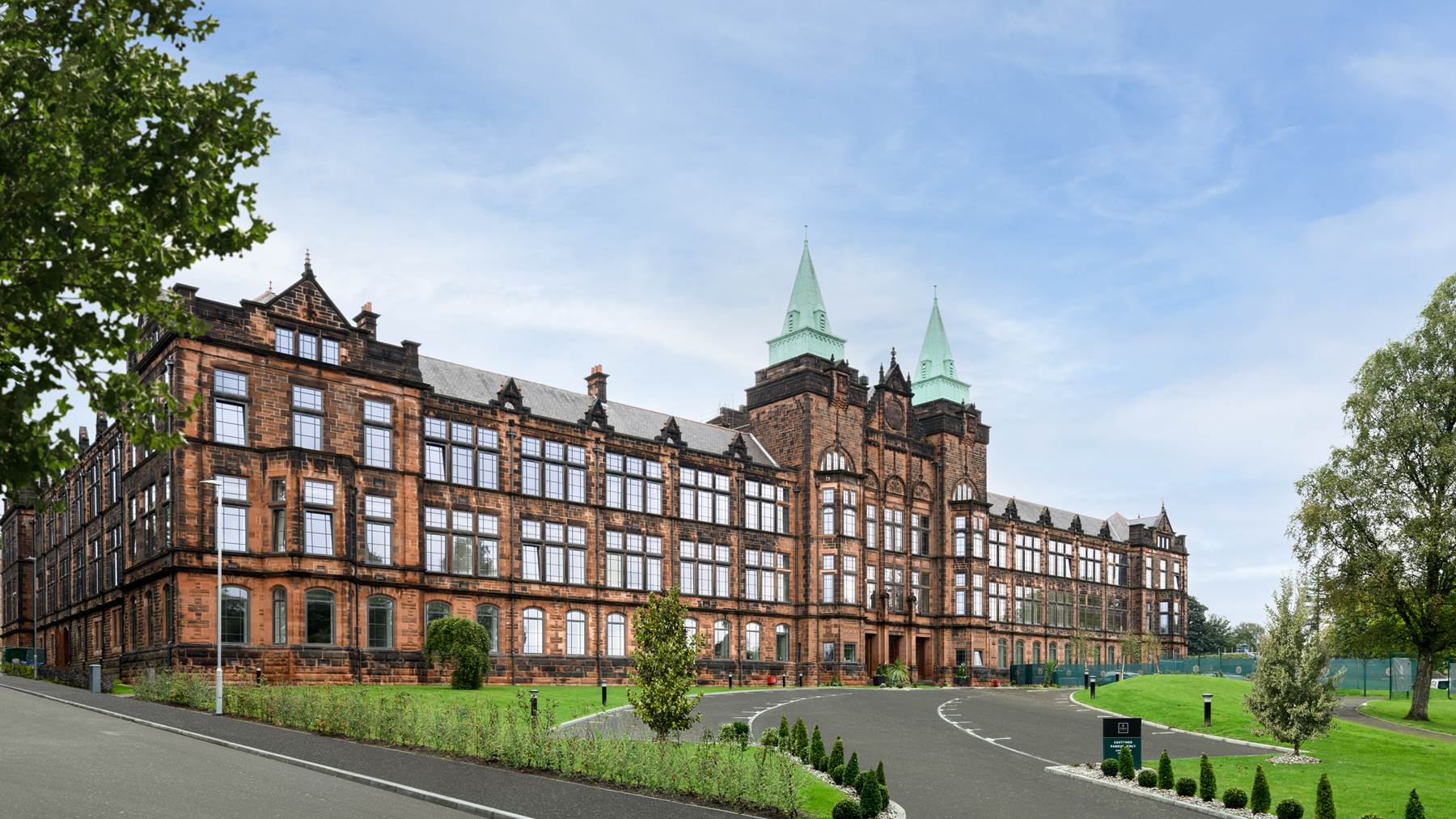
The David Stow building
“So, through carbon accountancy, and measuring the carbon input in current and past projects, we can effectively demonstrate a downward trend in embodied carbon within our designs. It’s very much a holistic approach and we challenge the client right at the outset with regards to their concept and brief and ask if it’s really fit for purpose.”
This can also involve challenging suppliers, including site investigation teams: “Is piling the most effective solution or are there alternatives out there? Can we look at a slight increase in the bearing pressure and reduce the amount of excavation because that also reduces the size of the foundations?”
With the growing importance of the sustainability agenda, he sees refurbishment being significant in the coming years. “Clients will be challenged by the economics of demolishing
existing buildings and look instead at trying to repurpose and enhance the existing offering of their buildings.
“And while I don’t disagree there are challenges in repurposing existing buildings there are also positives. Given the nature of concrete frame and steel frame buildings, there is an opportunity to consider vertical lateral extensions for example and these innovations will come more and more to the fore.”
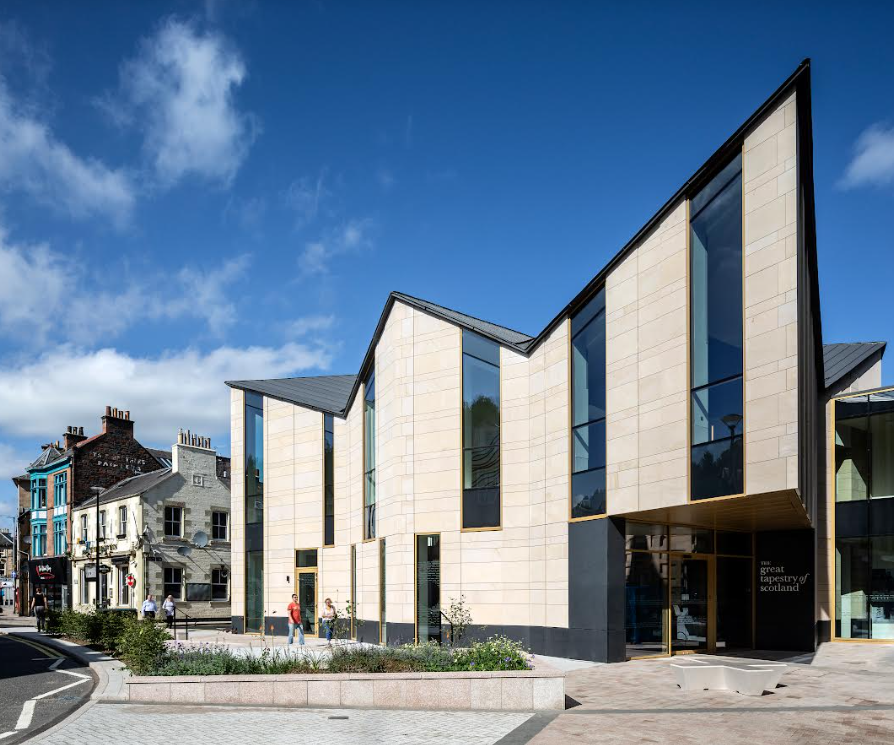
The Great Tapestry building in Galashiels
A native of Cookstown in Co Tyrone in Northern Ireland, Raymond studied Civil Engineering and Building at the University of Dundee and began his career with Blyth and Blyth Consulting Engineers before joining Goodson Associates in 2001.
He’s excited by the company’s ability to change and adapt. “I look at our younger members of staff and the new approaches they have toward engineering and solving problems and while there is still a requirement for ‘grey hair’ in the industry that should be coupled with the new technology and analysis techniques that are now available.”
Artificial Intelligence, he adds, is certainly another challenge. “As a business, we are continually monitoring its impact and rather than being afraid of it we can embrace and adopt AI to make our processes more efficient, and again, help add value for our clients.”
While he enjoys walking, biking, running or “paddling on a loch” one senses Raymond’s natural environment is pondering the ground conditions on a site – and considering what putting an industrial or residential development on that site will involve while maximising its value.
He returns to the theme of sustainability. “I believe that as civil and structural engineers we have great opportunities in the future – and that will be based very much on what we can contribute to the improvement of the environment,” he says.







